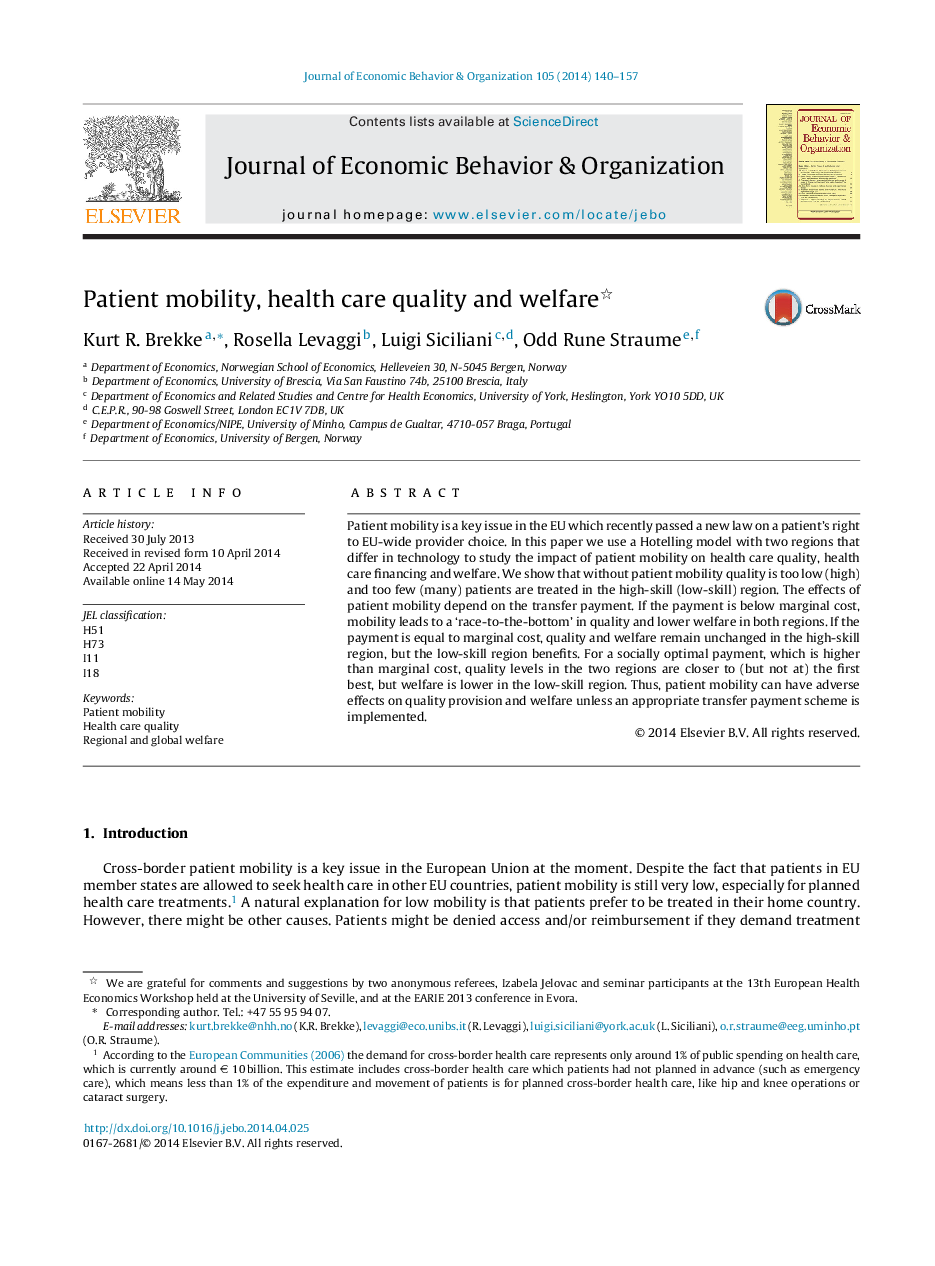| Article ID | Journal | Published Year | Pages | File Type |
|---|---|---|---|---|
| 883504 | Journal of Economic Behavior & Organization | 2014 | 18 Pages |
•We study the effect of interjurisdictional patient mobility on health care provision and financing.•We use a Hotelling model with two regions that differ in technology and finance health care through taxation.•We show that patient mobility may have adverse effects on quality and welfare unless an appropriate transfer payment scheme is implemented.
Patient mobility is a key issue in the EU which recently passed a new law on a patient's right to EU-wide provider choice. In this paper we use a Hotelling model with two regions that differ in technology to study the impact of patient mobility on health care quality, health care financing and welfare. We show that without patient mobility quality is too low (high) and too few (many) patients are treated in the high-skill (low-skill) region. The effects of patient mobility depend on the transfer payment. If the payment is below marginal cost, mobility leads to a ‘race-to-the-bottom’ in quality and lower welfare in both regions. If the payment is equal to marginal cost, quality and welfare remain unchanged in the high-skill region, but the low-skill region benefits. For a socially optimal payment, which is higher than marginal cost, quality levels in the two regions are closer to (but not at) the first best, but welfare is lower in the low-skill region. Thus, patient mobility can have adverse effects on quality provision and welfare unless an appropriate transfer payment scheme is implemented.
